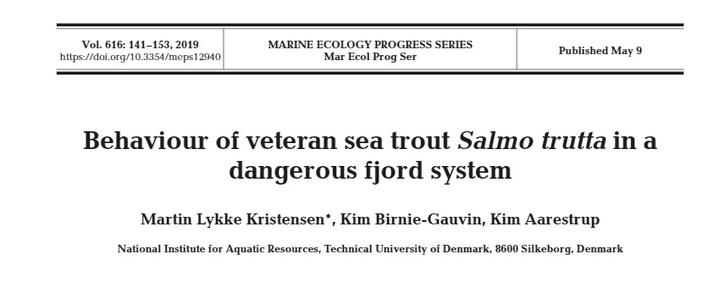Behaviour of veteran sea trout Salmo trutta in a dangerous fjord system

Abstract
The behaviour and survival of sea trout Salmo trutta L. in marine environments remains scarcely described despite the widespread ecological and cultural importance of the species. We tracked 160 wild, post-spawned sea trout in 2 Danish river systems using acoustic tags to examine their behaviour in a fjord system characterized by a scarcity of refuges and a high abundance of mammalian and avian predators. The fjord has an eastern opening 120 km from the river outlets and a western opening 110 km from the river outlets. All surviving fish left the fjord through the eastern outlet, except for 2 surviving individuals that stayed in the fjord. We observed the lowest marine survival (15%) and the fastest progression rates documented for the species in marine environments. After a variable period of residency close to the river mouths, the fish moved through the fjord within a short window of time at gradually increasing speeds (mean 1.1 km d-1 in the fjord compartment they entered, mean 43.4 km d-1 in the final fjord compartment before reaching the sea). We found no statistically significant differences between exit timing, migration behaviour (speed and time) and survival of fish from the 2 river systems. The results suggest that migrating quickly through the dangerous fjord system and exiting at a specific time is important to succeed in the area. Our results distinguish themselves from those obtained in similar studies of sea trout elsewhere and provide new insights on factors influencing survival and migration behaviour of salmonids.